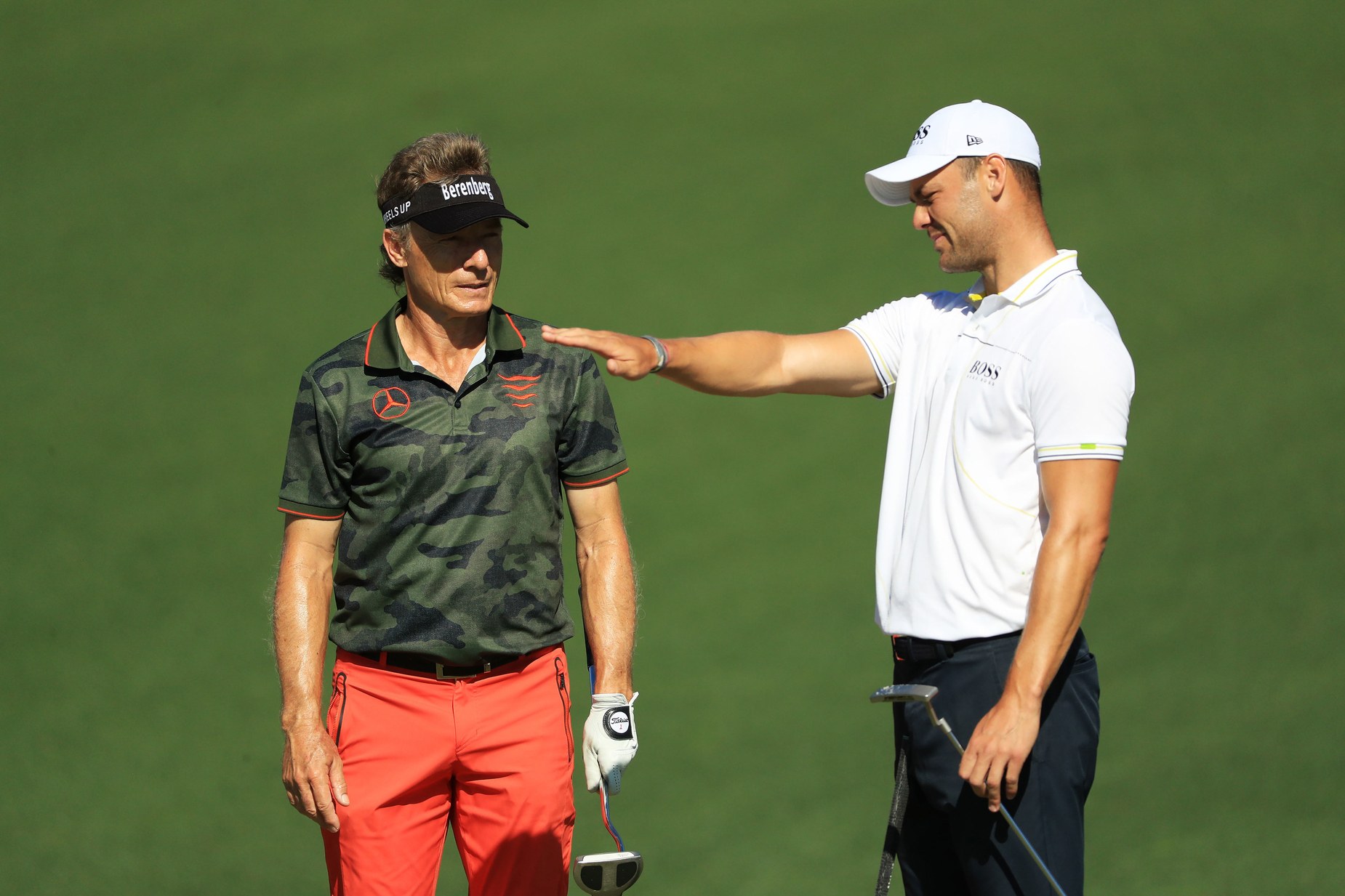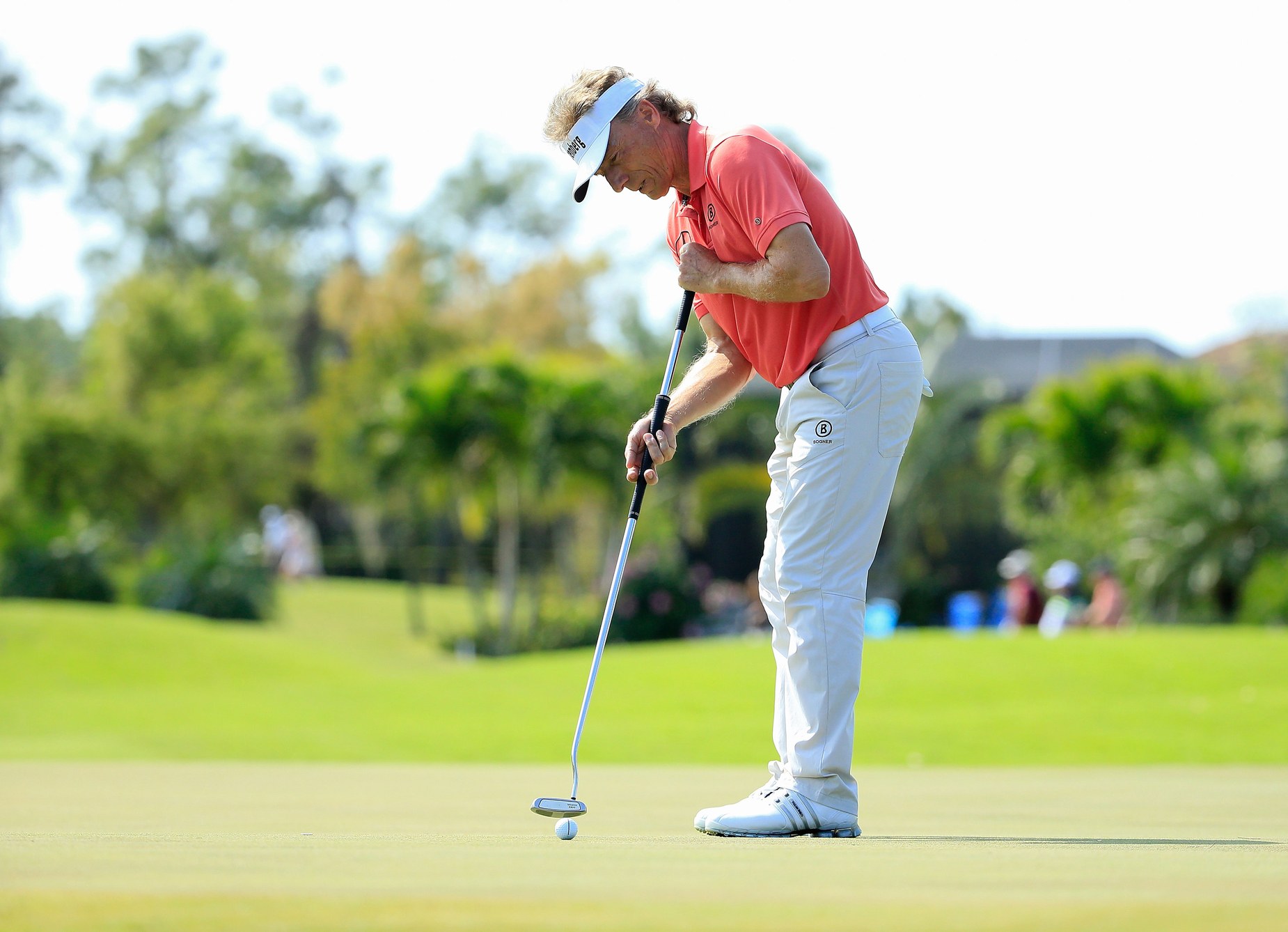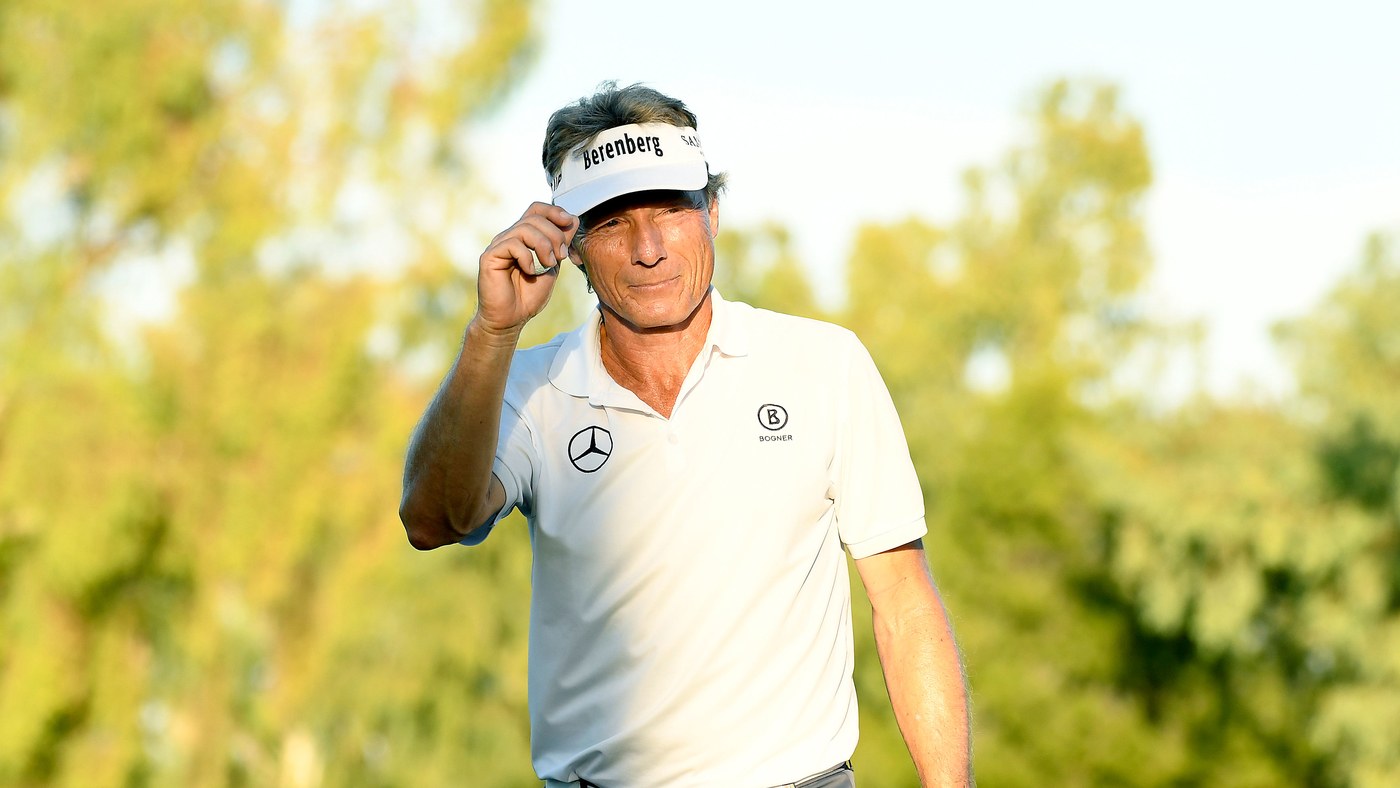By John Feinstein
The day before the 2016 Players Championship at TPC Sawgrass, I walked onto an elevator and found Martin Kaymer standing there. The day before that, I’d spent a couple of hours talking to Kaymer for the book I was researching on the Ryder Cup. He had mentioned that he was playing a practice round early Wednesday with Bernhard Langer—a big deal for Kaymer, who, like any German kid who has picked up a golf club in the last 35 years—considers Langer a hero.
“How’d it go with Bernhard today?” I asked casually.
Kaymer shook his head. “It was amazing,” he said. “He’s 25 years older than I am and he hits it as far as I do. Sometimes farther. I’m not the longest hitter there is, but I hit it far enough. He left me with my mouth hanging open a few times.”
Langer is actually 27 years older than Kaymer and he’s been leaving people open-mouthed for a long time now. On Sunday, the 62-year-old did it again, birdieing nine of the first 17 holes to shoot an eight-under-par 65 (he decided to prove to people that he’s human by bogeying 18) that allowed him to come back from a three-shot deficit and win the Cologuard Classic in Tucson, his 41st title on the PGA Tour Champions.
The victory made it 14 straight years, dating to 2007, the year he turned 50, that Langer has won at least once on the tour for players 50-and-older. It left him four wins shy of Hale Irwin’s all-time record of 45 victories.
By any standard—except perhaps NBC’s Paul Azinger, who made it clear Sunday he thinks of any tour other than the PGA Tour as minor league—Langer is one of golf’s all-time greats. He won the Masters twice and has 111 wins worldwide in his remarkable career—though only three on the PGA Tour. Two of those came on consecutive weeks: the 1985 Masters and the Sea Pines-Heritage Classic on Hilton Head Island. Langer won 42 times on the European Tour and was inducted into the World Golf Hall of Fame in 2002—five years before he turned 50 and began his remarkable run against the senior set.

Mike Ehrmann/Getty Images
Langer gets in a practice round with countryman Martin Kaymer at last year’s Masters.
Perhaps it was a harbinger when, two months after turning 50, he won the Administaff Small Business Classic by eight shots. He hasn’t looked back since then—11 of his 41 victories have been in senior majors and he has been the tour’s money leader 10 of the last 12 years. Scott McCarron finally broke Langer’s seven-year stranglehold on the money title last year; Langer settled for fourth, having only won twice in 2019 (one of the victories a major). After Langer’s victory in Tucson, he’s on top of this year’s money list, a spot he’s occupied for 134 of 285 weeks since 2008, his first full year among the seniors.
That’s a lot of numbers—most of them mind-boggling. But Langer’s career is about far more than numbers. It’s about a relentless will to stay at or near the top of the game through setbacks that could easily have been career-ending.
The first issue, which has been a part of his life since he was 18, are the putting yips. Langer, who turned pro at 15, has said he first remembers having the yips in his first days playing the European Tour while trying to adapt to fast greens in Portugal and Spain after growing up on slow greens in Germany. They have come back on three occasions since, forcing him to change grips and putters and attitude. Each time he’s been able to find the answer—including most recently in 2016 when the USGA and R&A banned the anchored stroke he’d used, forcing Langer to adjust to holding the long putter he’s used since 1997 away from his body.
There were those who believe that Langer and McCarron were still anchoring their putters even after the ban, but both have survived exhaustive investigations by the USGA that showed that they were not even though a casual glance might make it appear that they were.
Since the anchoring ban went into effect, Langer has won 15 times—including six majors—and won seven times in 2017. He even contended at the Masters in 2016—at age 58.
But even though the yips have been part of his life for more than 40 years, it may well be that Langer’s most impressive comeback came in the wake of the 1991 Ryder Cup. That was the infamous “War by the Shore” at Kiawah Island, which came down to the final singles match between Langer and, coincidentally enough, Irwin.
Langer had a six-foot par putt on the 18th green to win the match. That would have given Europe a 14-14 tie and allowed it to retain the Cup for the second straight time after winning it in 1985 and 1987. Langer, after stalking the putt for what felt like hours, read it as straight and hit it exactly the way he wanted to. But it swerved right at the last possible moment, leading to what might have been the wildest celebration in Ryder Cup history.
A lot of players would have been destroyed, or at least badly battered emotionally by that sort of miss on that sort of stage. Langer won in Stuttgart a week later. Eighteen months after that, he won his second Masters.
Langer became a born-again Christian not long after his first Masters victory in 1985. He is not, by nature, an expansive talker, but when he does speak about overcoming the yips and the miss at Kiawah, much of what he says goes back to his faith and his belief that the Ryder Cup was merely a golf competition between 24 players from both sides of the Atlantic giving their all to win. Nothing more. Nothing less. Not a war by any stretch.

Michael Cohen
Since the anchoring ban, Langer has won 15 of his 41 senior titles, including six majors.
Among the many sources of controversy and angry words that weekend was Steve Pate not playing in the singles matches. Pate had been injured in a car accident on Thursday before the start of the competition but came back to play on Saturday afternoon. Early Sunday morning, U.S. captain Dave Stockton informed European captain Bernard Gallacher that Pate couldn’t play. That meant David Gilford would sit out for Europe and the teams would split the point.
Almost everyone on the European side expressed the firm opinion that Pate was held out to ensure the U.S. would get a half-point from him. Not Langer.
“If a guy says he’s hurt and can’t play, or feels he’s going to do long-term damage by playing, that’s good enough for me,” was Langer’s comment.
Langer played on 10 European Ryder Cup teams and captained the Europeans to an 18½-9½ rout at Oakland Hills in 2004. He finished his Ryder Cup career with 24 points even though most people focus on the half-point not won at Kiawah.
Irwin’s last PGA Tour Champions victory, at age 61, came in January 2007—nine months before Langer’s first. Langer will turn 63 in August. Irwin admits there came a point where he felt that he’d lost his edge. It certainly hasn’t happened to Langer yet.
As for the argument about who is the greatest senior player of all, Irwin or Langer—let the last word come from Irwin.
“I think Bernhard is, probably, in my estimation, the best senior player to play the game,” he said.
No doubt, the next time Kaymer plays a practice round with Langer, he’ll be in awe of him.
Still.









